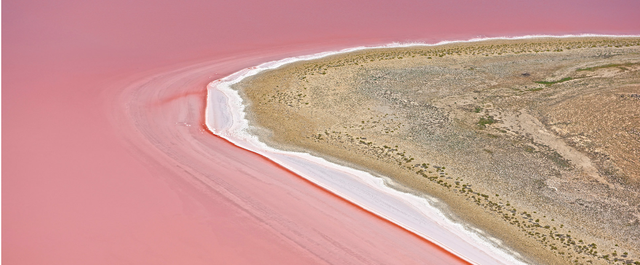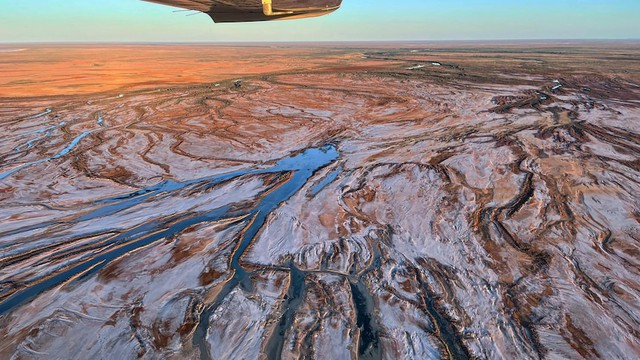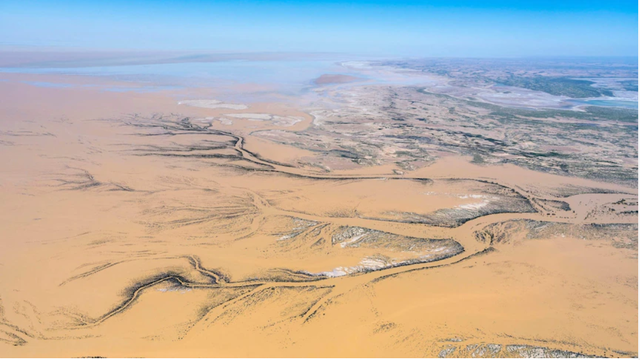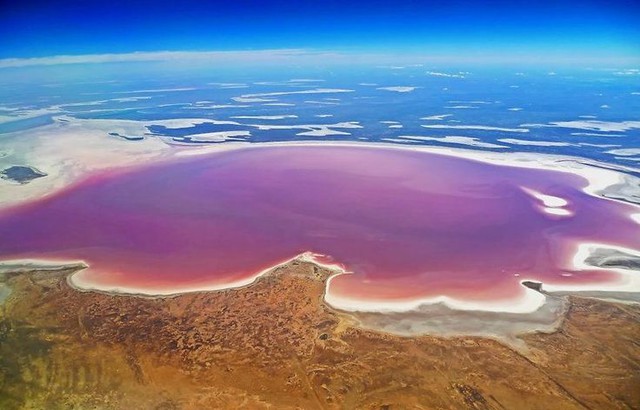
Australia is a country with countless beautiful places and always contains many of the strangest things in the world. When talking about the most unique places in Australia, we cannot help but mention Lake Eyre. Because Lake Eyre has really given scientists a headache because of its sudden disappearances. In particular, it disappears about every 3 years and each time it reappears, the depth of the lake water also changes. What happened to Lake Eyre?

Lake Eyre is a strange lake that disappears every 3 years. (Photo: ABC)
Lake Eyre, also known as Kati Thanda Lake by the Aboriginal people, is Australia’s largest saltwater lake. It is also the lowest lake in the country. The lake is located about 15 m below sea level. It is located about 700 km north of Adelaide and is formed in an endorheic basin. Lake Eyre is located in central Australia. Surrounding the lake is the Lake Eyre National Park.
The lake is divided into two parts connected by the Goyder Canal: North Eyre Lake is about 144 km long and 66 km wide; South Eyre Lake is 64 km long and 24 km wide. The total area is 9,500 km2. The salt layer is up to 50 cm thick at its thickest point.
Lake Eyre is one of the world’s largest saltwater lakes. (Photo: ABC)
Lake Eyre was named after Edward John Eyre, who first discovered it. In 1832, a survey team went to Central Australia and accidentally found a large pool of water covered with salt. In 1860, another survey team came and found a large salt lake. However, when they returned the following year to measure the lake’s surface, strangely, the lake had disappeared, leaving only a small amount of water.
Later, scientists discovered that Lake Eyre is not always full of water, but is in fact a seasonal lake. That is, the water in the lake disappears once every 3 years. The reason why the water in the lake changes so much is because Lake Eyre gets its water from rainwater and rivers. Because Lake Eyre is located in the driest and most barren area of Australia with an annual rainfall of only 125 mm, the lake’s surface area is not fixed.

Lake Eyre’s area varies from 0 to 8,200 square kilometres. (Photo: ABC)
When it rains a lot, the lake’s surface area can reach 8,200 km2 and when it rains little, the water will evaporate to the point of drying up to the bottom. Therefore, in the geographical dictionary, the area of Lake Eyre is determined from 0 to 8,200 km2 and there is no fixed number. Lake Eyre when full of water occupies up to 1/6 of the area of Australia’s territory. This has made Lake Eyre one of the largest saltwater lakes in the world.
It can be said that the amount of rain that falls on Lake Eyre and the wider surrounding area during the year determines how large the lake becomes that year.

Without rain, Lake Eyre can dry to the bottom. (Photo: ABC)
Due to the varying water levels, Lake Eyre’s depth varies greatly. It is sometimes measured as 1.5 metres deep, but can reach up to 4 metres when it rains heavily. Many people have said they are drawn to this variability of Lake Eyre and so come to see it for themselves.
In contrast to the bleak landscape when the lake is dry, Lake Eyre is bustling with life when it is full. Many species of wildlife have found their home here. They come from Queensland to feed and breed, then return to where they came from.

Every time there is heavy rain, water from north Queensland flows in, mixes with salt and pink algae, and turns the lake a beautiful pink color. (Photo: ABC)
However, not only has the lake water disappeared, Lake Eyre is also famous for its surprising ability to change color. In particular, every time there is heavy rain in North Queensland, the water travels more than 1000km, through the most remote areas of Australia to reach Lake Eyre. Strangely, after the rainwater reaches the place, the water of Lake Eyre turns a beautiful pink color. The reason this phenomenon occurs is because the water makes the dissolved salts and pink algae appear clearly.
To improve the arid climate of Central Australia, scientists have proposed digging a river to connect Lake Eyre to the sea. They believe that this will automatically allow seawater to flow into the lake, and Lake Eyre will no longer appear and disappear.






